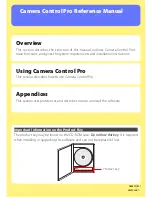
46
Chapter 4. Red Hat Network Website
4.4. Systems
If you click the
Systems
tab on the top navigation bar, the
Systems
category and links appear. The
pages in the
Systems
category allow you to select systems so that you can perform actions on them
and create System Profiles.
4.4.1. Overview
The
Overview
page provides a summary of your systems, including their status, number of associated
Errata and packages, and entitlement level. Clicking on the name of a system takes you to its
System
Details
page. Refer to Section 4.4.2.6
System Details
for more information.
Clicking the
View System Groups
link at the top of the
Overview
page takes you to a similar sum-
mary of your system groups. It identifies group status and displays the number of systems contained.
Clicking on the number of systems takes you to the
Systems
tab of the
System Group Details
page,
while clicking on the system name takes you to the
Details
tab. Refer to Section 4.4.3.3
System Group
Details
for more information.
You can also click the
Use Group
button in the
System Groups
section of the
Overview
page to go
directly to the
System Set Manager
. Refer to Section 4.4.4
System Set Manager
for more information.
4.4.2. Systems
As shown in Figure 4-3, the
Systems
page displays a list of all your registered systems. The
Systems
list contains several columns of information for each system:
•
Select
— Only Management-entitled systems can be selected. To select systems, mark the appro-
priate checkboxes and click the
Update List
button below the column. Selected systems are added
to the
System Set Manager
. After adding systems to the
System Set Manager
, you can use it to
perform actions on them simultaneously. Refer to Section 4.4.4
System Set Manager
for details.
•
Status
— Shows which type of Errata Alerts are applicable to the system or confirms that it is
up-to-date. Some icons are linked to pages providing resolution. For instance, the standard Updates
icon is linked to the
Upgrade
subtab of the packages list, while the Critical Updates icon goes
directly to the
Update Confirmation
page. Also, the Not Checking In icon is linked to instructions
for resolving the issue, while the Unentitled icon goes to the
Buy Now
page, if the user is an
Organization Administrator.
•
— System is up-to-date
•
— Critical Errata available, update
strongly
recommended
•
— Updates available and recommended
•
— System is locked; Actions prohibited
•
— Updates have been scheduled
•
— System not checking in properly (for 24 hours or more)
•
— System not entitled to any update service
•
Errata
— Total number of Errata Alerts applicable to the system. Clicking on the Errata number
for a Management-level system takes you to a list of its relevant Errata.
•
Packages
— Total number of package updates for the system. Includes packages from Errata Alerts
as well as newer packages that are not from Errata Alerts. For example, if a system is subscribed
Summary of Contents for NETWORK 2.9 - MANAGEMENT
Page 1: ...Red Hat Network 2 9 Management Reference Guide...
Page 14: ...6 Chapter 1 What is Red Hat Network...
Page 46: ...38 Chapter 3 Red Hat Network Alert Notification Tool...
Page 78: ...70 Chapter 4 Red Hat Network Website...
Page 82: ...74 Chapter 6 Using Red Hat Network with Red Hat Linux 6 2...
Page 96: ...88 Chapter 7 Red Hat Network Registration Client...
Page 102: ...94 Glossary...
Page 106: ......
















































